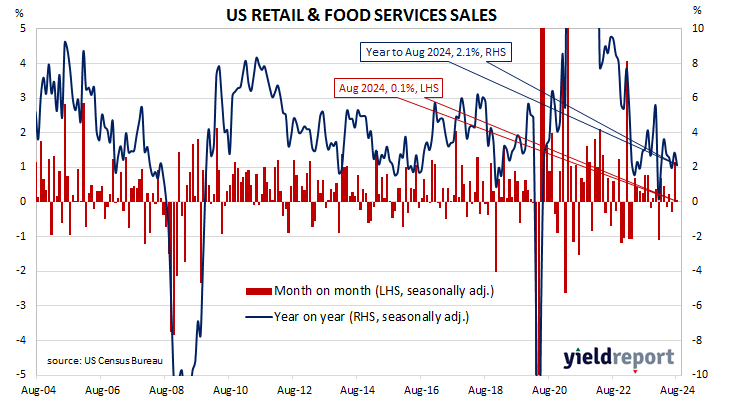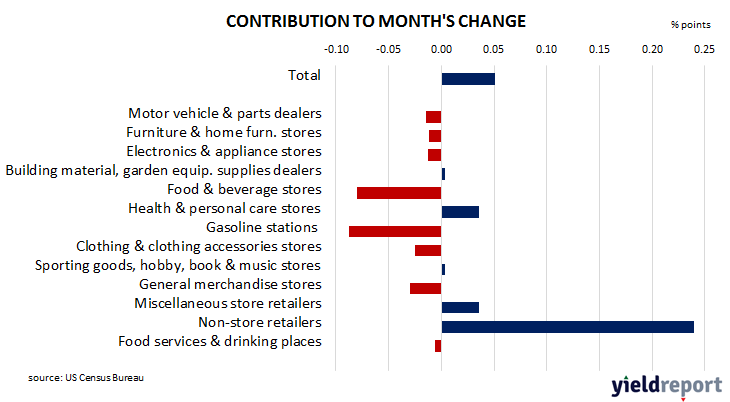Summary: US retail sales up 0.1% in August, contrasts with expected decline; annual growth rate slows to 2.1%; Westpac: recent data points to near-trend growth in Q3 goods consumption; US Treasury yields up; rate-cut expectations soften slightly; Westpac: GDP component of sales up 0.3% in August, up 0.4% in July; higher sales in five of thirteen categories; online sales largest single influence on month’s result.
US retail sales had been trending up since late 2015 but, commencing in late 2018, a series of weak or negative monthly results led to a drop-off in the annual growth rate below 2.0%. Growth rates then increased in trend terms through 2019 and into early 2020 until pandemic restrictions sent them into negative territory. A “v-shaped” recovery then took place which was followed by some short-term spikes as federal stimulus payments hit US households in 2021. However, growth rates have slowed significantly since mid-2022.
According to the latest “advance” numbers released by the US Census Bureau, total retail sales increased by just 0.1% in August. The result contrasted with the 0.2% fall which had been generally expected but it was well down from July’s 1.1% rise after revisions. On an annual basis, the growth rate slowed from July’s revised rate of 2.9% to 2.1%.
“Overall, recent retail sales data points to near-trend growth in goods consumption in Q3,” said Westpac economist Illiana Jain.
The figures came out on the same morning as August’s industrial production figures and short-term US Treasury bond yields increased noticeably on the day while longer-term yields rose more moderately. By the close of business, the 2-year Treasury yield had gained 6bps to 3.61% while 10-year and 30-year yield both finished 3bps higher at 3.65% and 3.96% respectively..
In terms of US Fed policy, expectations of a lower federal funds rate in the next 12 months softened slightly, although at least nine 25bp cuts are still factored in. At the close of business, contracts implied the effective federal funds rate would average 5.17% in September, 4.64% in November and 4.40% in December. August 2025 contracts implied 2.965%, 236bps less than the current rate.
“The control group, which feeds into the GDP calculation, was stronger at 0.3%, and the July estimate also edged up to 0.4%,” Jain added. “In 3-month annualised terms, the control group reading rose by 5.7%, the fastest rate since August 2023.”
Only five of the thirteen categories recorded lower sales over the month. The “Non-store retailers” segment had the largest single influence on the overall result as it rose by 1.4% over the month and contributed 0.24 percentage points to the total.
The non-store segment includes vending machine sales, door-to-door sales and mail-order sales but nowadays this segment has become dominated by online sales. It accounts for around 17% of all US retail sales and it is the second-largest segment after vehicles and parts.



